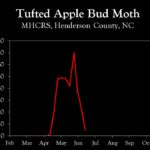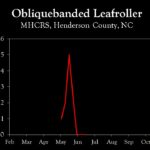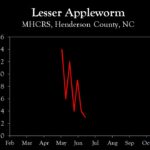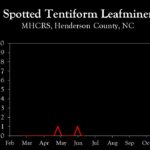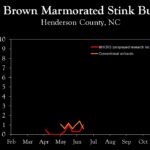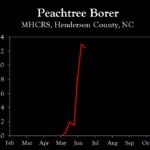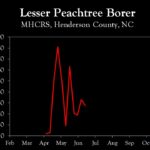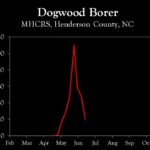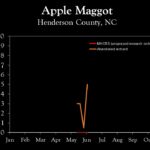WNC Orchard Insect Pest Populations – June 17, 2025
go.ncsu.edu/readext?1078150
en Español / em Português
El inglés es el idioma de control de esta página. En la medida en que haya algún conflicto entre la traducción al inglés y la traducción, el inglés prevalece.
Al hacer clic en el enlace de traducción se activa un servicio de traducción gratuito para convertir la página al español. Al igual que con cualquier traducción por Internet, la conversión no es sensible al contexto y puede que no traduzca el texto en su significado original. NC State Extension no garantiza la exactitud del texto traducido. Por favor, tenga en cuenta que algunas aplicaciones y/o servicios pueden no funcionar como se espera cuando se traducen.
Português
Inglês é o idioma de controle desta página. Na medida que haja algum conflito entre o texto original em Inglês e a tradução, o Inglês prevalece.
Ao clicar no link de tradução, um serviço gratuito de tradução será ativado para converter a página para o Português. Como em qualquer tradução pela internet, a conversão não é sensivel ao contexto e pode não ocorrer a tradução para o significado orginal. O serviço de Extensão da Carolina do Norte (NC State Extension) não garante a exatidão do texto traduzido. Por favor, observe que algumas funções ou serviços podem não funcionar como esperado após a tradução.
English
English is the controlling language of this page. To the extent there is any conflict between the English text and the translation, English controls.
Clicking on the translation link activates a free translation service to convert the page to Spanish. As with any Internet translation, the conversion is not context-sensitive and may not translate the text to its original meaning. NC State Extension does not guarantee the accuracy of the translated text. Please note that some applications and/or services may not function as expected when translated.
Collapse ▲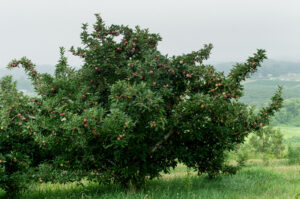 Codling Moth: Throughout the region we remain in that window where codling moth is between generations, and unless there is a history of problems (current or past years), there is a low probability that insecticides are necessary. In most orchards that have low populations, a single insecticide application against the second generation at about 1450 Degree Days serves as a good preventive application for this generation; Cleveland County is currently at about 1200 DD and Henderson County is at about 900 DD. Based on weather forecasts, 1450 DD is predicted for the Cleveland County area early next week. In Henderson County, 1450 is not expected for at least another two weeks.
Codling Moth: Throughout the region we remain in that window where codling moth is between generations, and unless there is a history of problems (current or past years), there is a low probability that insecticides are necessary. In most orchards that have low populations, a single insecticide application against the second generation at about 1450 Degree Days serves as a good preventive application for this generation; Cleveland County is currently at about 1200 DD and Henderson County is at about 900 DD. Based on weather forecasts, 1450 DD is predicted for the Cleveland County area early next week. In Henderson County, 1450 is not expected for at least another two weeks.
While we are in the mid-flight period of second generation OFM in Henderson County and similar elevations, populations have been low in most areas.
Indirect Pests: European red mite (ERM) and potato leafhopper are the key indirect pests that should be scouted for at this time. The potential for ERM populations to increase to threshold levels will increase with rising temperatures over the next couple of weeks. A threshold of about 5 mites per leaf (equivalent to about 80% of leaves infested with 1 or more mites) is a good level to assess whether or not a miticide is necessary. If predatory mites are not present and ERM continue to increase, a miticide should be applied. Products with quick knockdown activity are required in these situations, and include Acramite (bifenazate), Kanemite (acequinocyl), Envidor (spirodiclofen), Portal (fenpyroximate), and Nealta (cyflumetofen).
Potato leafhoppers feed on new shoot growth, resulting in hopper burn on leaves (curling and yellowing of leaves on the edges). Control is most important on young trees where shoot growth is encouraged. On larger or older trees where shoot growth is discouraged, damage is less impactful, although from a cosmetic perspective many growers prefer to treat before damage is too extensive. Low rates of all insecticides in MOA Group 4 (neonics) and other insecticides recommended for aphids (e.g., Versys, Beleaf, and Movento) all provide excellent control.
Learn more about southeastern apple insect pests at the Apple Insect Management page.
2025 Average Weekly Trap Captures
| HENDERSON COUNTY | |||
| Insects per trap | |||
| Jun 2 | Jun 9 | Jun 16 | |
| Codling moth | 3.5 | 1.0 | 0.0 |
| Oriental fruit moth | 15.0 | 16.5 | 12.5 |
| Tufted apple bud moth | 38.0 | 23.0 | 5.0 |
| Redbanded leafroller | 20.0 | 20.0 | 1.0 |
| Obliquebanded leafroller | 0.0 | 0.0 | 0.0 |
| Lesser appleworm | 9.0 | 4.0 | 3.0 |
| Apple maggot (unsprayed research orchards) | 0.0 | 0.0 | 0.0 |
| Apple maggot (abandoned orchard) | 3.0 | 0.5 | 5.0 |
| Brown marmorated stink bug (commercial orchards) | 1.0 | 1.4 | 0.6 |
| Brown marmorated stink bug (unsprayed research orchards) | 0.3 | 0.3 | 1.0 |
| Spotted tentiform leafminer | 1.0 | 0.0 | 0.0 |
| Dogwood borer | 58.0 | 48.0 | 20.0 |
| Peachtree borer | 8.0 | 13.0 | 12.5 |
| Lesser peachtree borer | 19.0 | 33.0 | 27.5 |
| San Jose scale | 0.0 | 0.0 | 1.3 |
*Note that these averages illustrate only the timing of insect emergence and fluctuations in populations, and are not representative of population levels in any given orchard. The only way to have an accurate assessment of an individual orchard’s populations is to set up traps in that orchard.
2025 Accumulated Degree Days
| HENDERSON COUNTY | ||||
| Jun 2 | Jun 9 | Jun 16 | ||
| Codling moth (Biofix: April 21) | 578 | 719 | 870 | |
| Oriental fruit moth (Biofix: March 17) | 1175 | 1351 | 1537 | |
| Tufted apple bud moth (Biofix: April 14) | 853 | 1029 | 1215 | |





